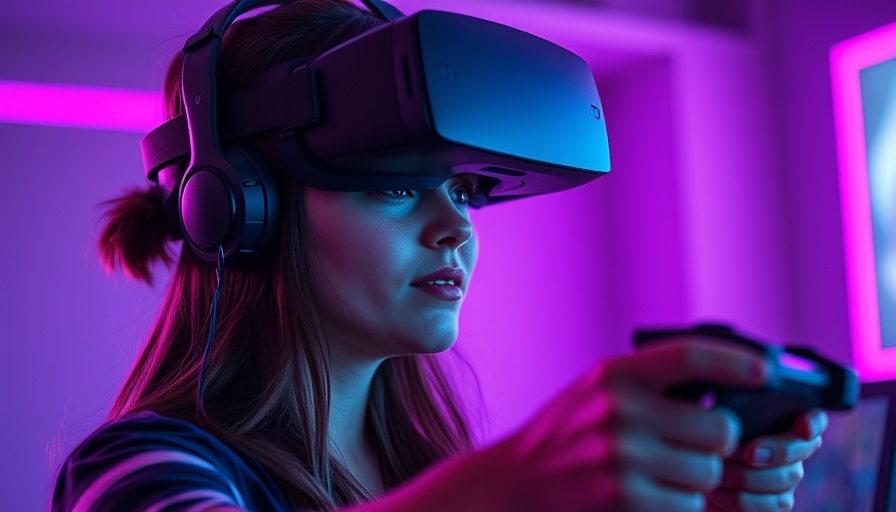
Understanding Immersive Virtual Reality in Mental Health Treatment
Immersive virtual reality (VR) technology has expanded its horizons beyond gaming and entertainment and is now carving a niche in the treatment of mental health disorders. Anxiety issues are at the forefront of this development, offering promising pathways for those seeking relief from their conditions. VR therapy immerses users in carefully constructed environments that can simulate real-world challenges, providing patients with tools to confront their fears in a controlled setting.
The Promise of Virtual Reality for Anxiety Disorders
Virtual reality can serve as a powerful ally for individuals struggling with anxiety disorders. By enabling patients to face their anxieties through a digital lens, this form of therapy can reduce the stigma often associated with seeking help for mental health conditions. As Melissa, a therapist specializing in anxiety, puts it, "VR breaks the barriers to facing fears, making therapy feel less overwhelming for my patients." It’s an innovative step toward enhancing treatment accessibility and complying with the National Mental Health Policy Framework.
Benefits Beyond Anxiety: Expanding VR Applications
While anxiety disorders might currently lead the charge in VR therapy applications, its potential benefits extend to other mental health challenges, including depression, bipolar disorder, and PTSD. VR can facilitate exposure therapy, which helps patients process traumatic memories safely while providing real-time feedback from mental health professionals. This innovation not only empowers patients but also educates them on coping mechanisms and strategies, enhancing their overall mental resilience.
A Closer Look at Depression and Immersive Technology
Depression is another significant area where VR shows promise. Users can immerse themselves in scenarios aimed at shifting their mood, enabling experiences that foster positive thinking and emotional recovery. This tool aligns with a growing need for creative interventions tailored to individual experiences, as social media and academic pressures significantly impact today's youth. Parents and educators can benefit from understanding how virtual reality can be a support mechanism in academic settings, encouraging mental health wellness among students.
Fighting Mental Health Stigma Through Technology
One major aspect of using VR in mental health treatment is its contribution to reducing mental health stigma. Traditional therapy methods may inadvertently cause individuals to shy away from seeking help due to fears of judgment or social stigma. However, using technology-driven solutions provides anonymity and comfort, making mental health support more accessible. This is especially relevant today, as poor mental health outcomes are compounded by socio-economic factors, making it vital to leverage all available resources in combating mental ill-being.
Educational Opportunities and Future Trends in Mental Health
The integration of VR therapy in mental health care emphasizes the necessity for mental health education in schools, workplaces, and communities. Programs designed to educate staff and students on mental health issues can foster a supportive atmosphere that promotes awareness and understanding. As Lisa Thompson, a protagonist in mental health storytelling, explains, “Understanding ourselves and those around us is the first step toward healing.” Future trends suggest a focus on community-based mental health care, encouraging collaborative methods to support individuals across all age groups.
Practical Insights for Embracing VR in Therapy
For families, educators, and mental health practitioners considering VR as part of therapeutic interventions, it’s essential to stay informed about available tools and training options. Many treatment centers are now offering VR as part of holistic plans. Setting realistic expectations, understanding the process, and consulting with trained professionals can make the integration smoother and more beneficial for patients.
The Role of Community in Mental Health Initiatives
As we embrace technology like VR, community involvement remains crucial. Family, friends, and colleagues play essential roles in supporting individuals experiencing mental health issues. Encouragement to use innovative tools, along with established support systems, can help individuals navigate their path to better mental health. Engaging in conversations about mental health, fostering peer support groups, and advocating for mental health awareness initiatives are vital steps that everyone can take.
In conclusion, the advent of immersive virtual reality could reshape the landscape of mental health treatment. By combining cutting-edge technology with empathy and understanding, we can welcome a future where mental health care is not only more effective but also devoid of the stigmas that have long burdened those affected by mental disorders. So, let’s collaborate to promote mental health awareness and advocate for accessible treatment options for everyone.
 Add Row
Add Row  Add
Add 




Write A Comment